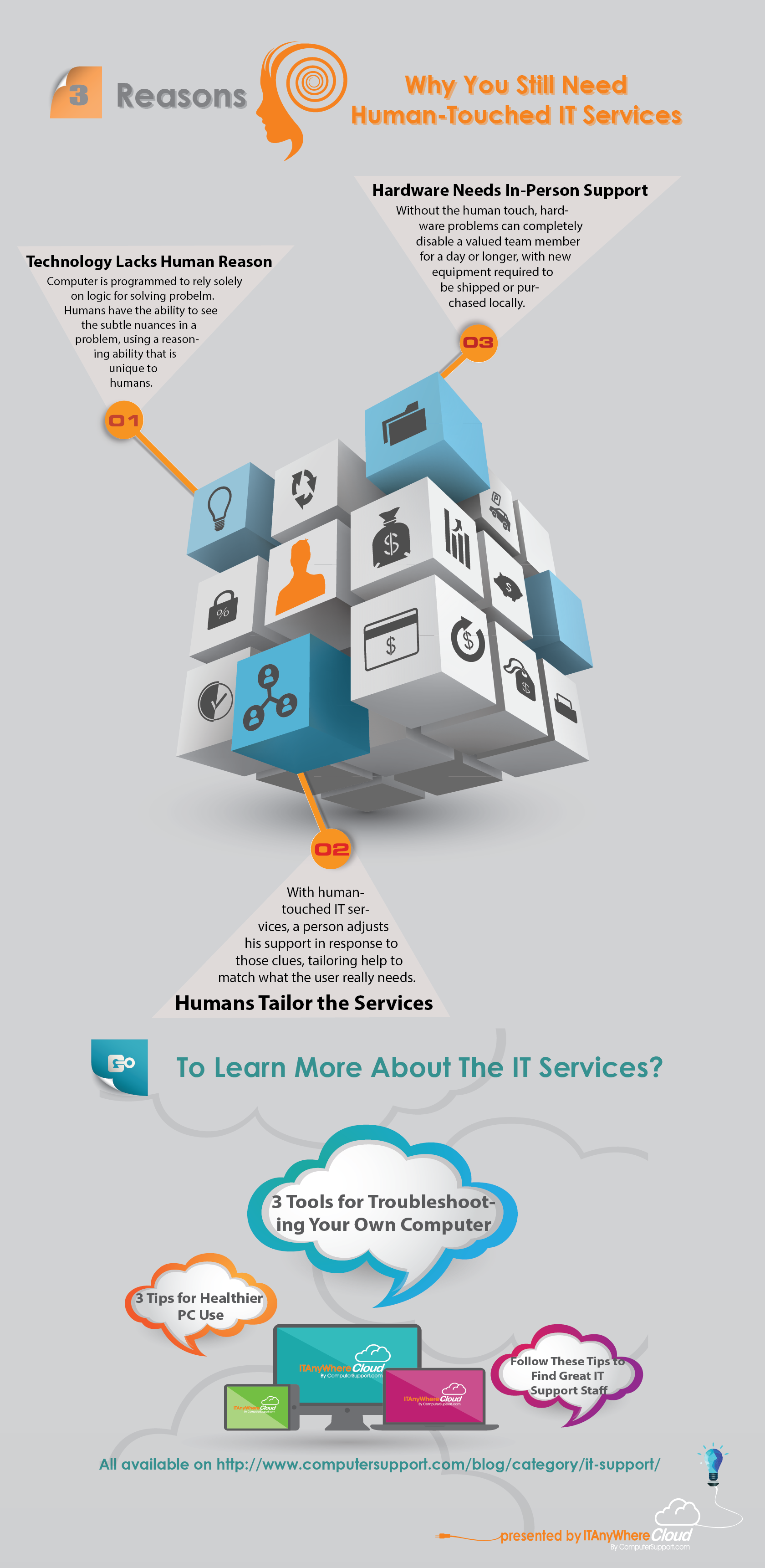3 Reasons Why You Need Human-Touched IT Services

As businesses increasingly reduce tech support in favor of live chat or knowledge-bases, they’re beginning to realize the value in computer support provided by a real person. Whether that person is a friendly voice on the other end of the phone line or a person who comes to your desk to help, humans have an ability to relate to each other in a way computers never can. Here are three reasons your business still needs to retain the human touch in your IT support.
Technology Lacks Human Reason
When a computer is presented with a problem, that computer is programmed to rely solely on logic for solving it. Humans, on the other hand, have the ability to see the subtle nuances in a problem, using a reasoning ability that is unique to humans. As the user explains the problem, a human has the ability to rule out various possible causes for that problem based on past experience. If the IT support person has worked with that user for a while, he may even be able to narrow down the problem based on knowledge of that user’s daily work activities and technical expertise.
Humans Approach Each User Differently
Even a call center learns to detect a user’s mood and anxiety levels based on the inflection and tone of his voice. With human-touched IT services, a person adjusts his support in response to those clues, tailoring help to match what the user needs. Within seconds of speaking to a user, a technical support person may be able to determine that the user would likely have ruled out the simple things, while a computer would have to require a user to answer a series of questions to arrive at the same conclusion.
Hardware Needs In-Person Support
One of the biggest challenges for companies that are trying to remove the human touch from IT is hardware repair and replacement. Occasionally, an employee will walk in to find a computer, monitor, printer, or copier is suddenly no longer functioning. In-person IT staff will usually keep a spare computer for those instances, getting the user up and running in just minutes while new equipment is ordered or existing hardware goes through extensive troubleshooting. Without the human touch, hardware problems can completely disable a valued team member for a day or longer, with new equipment required to be shipped or purchased locally.
Today’s users are more computer savvy than ever, but they still occasionally need technical support. There will likely never be a replacement for the help an empathetic, experienced IT support person can provide, so businesses should continue to retain it as a supplement to the online and remote desktop support they’re providing.




